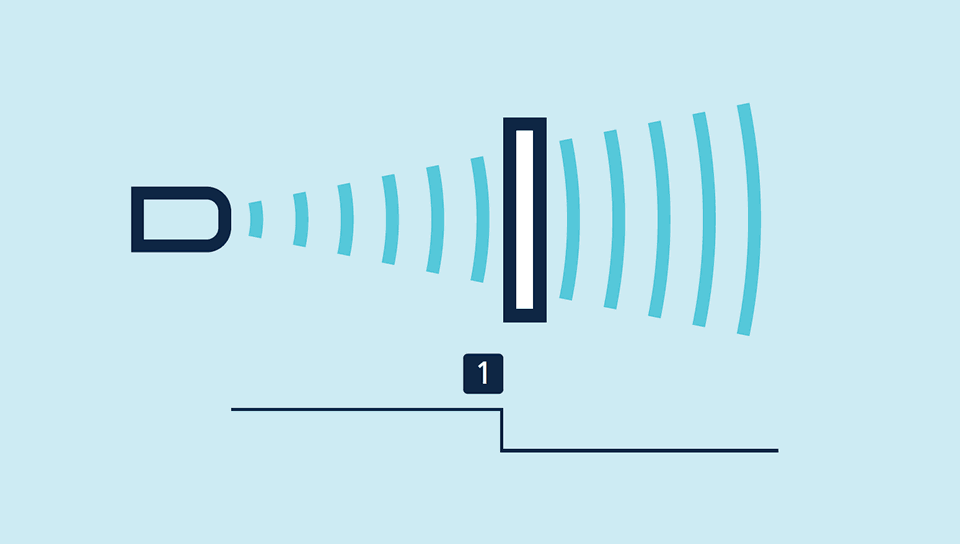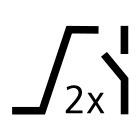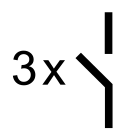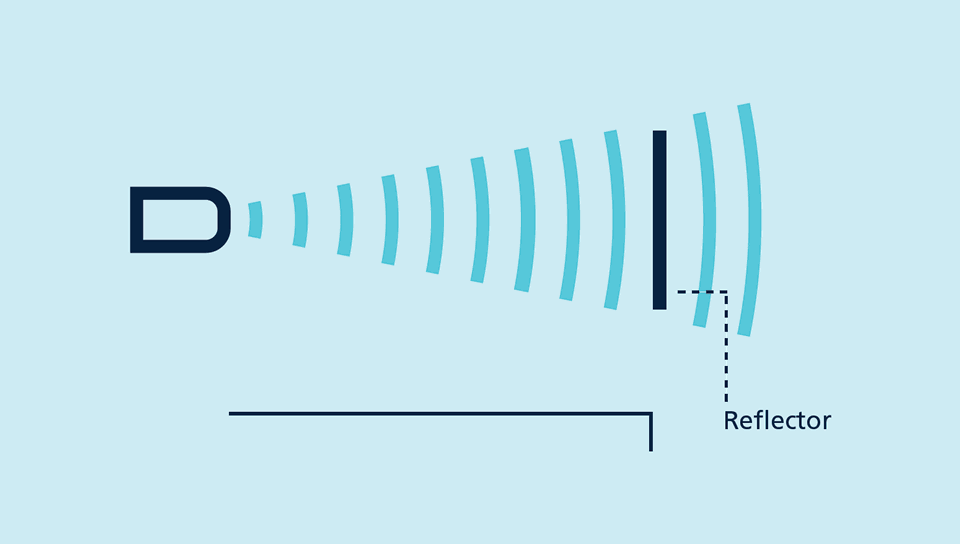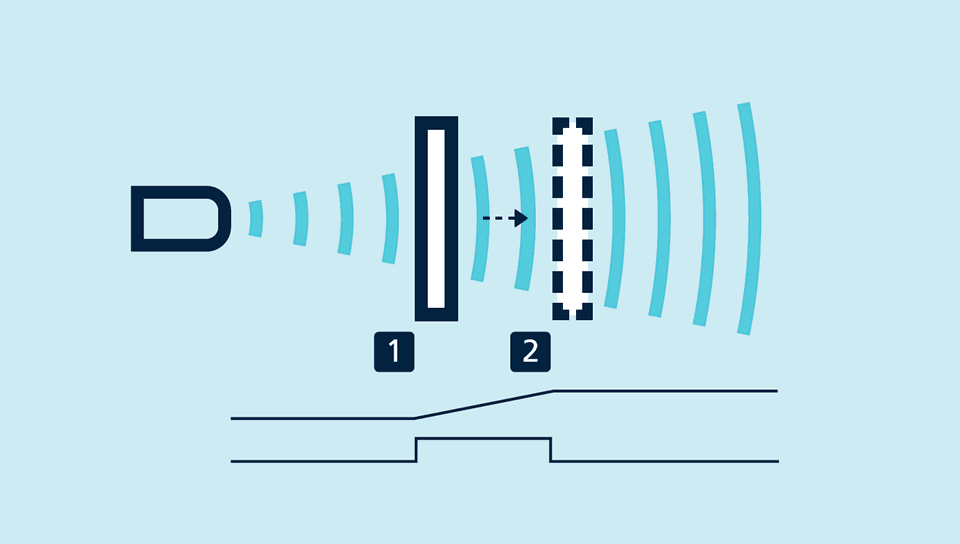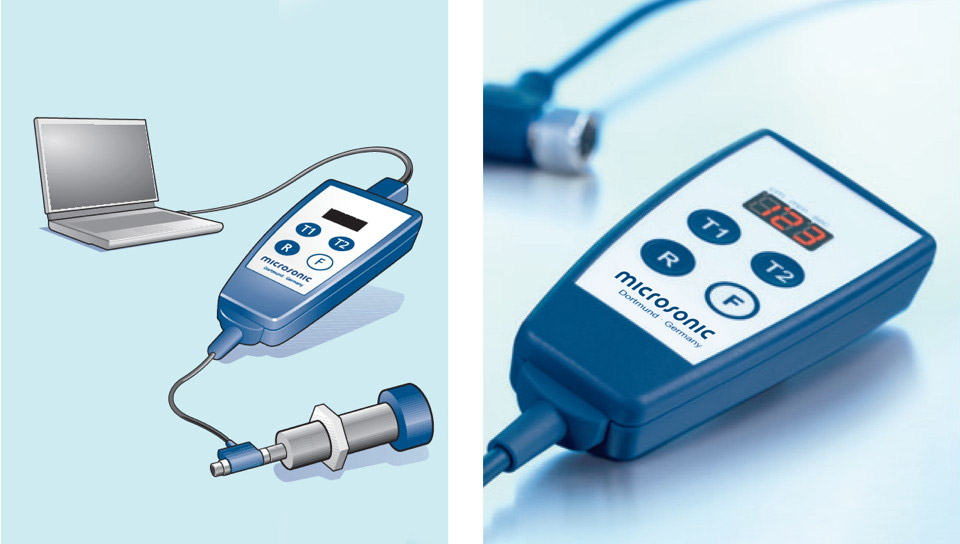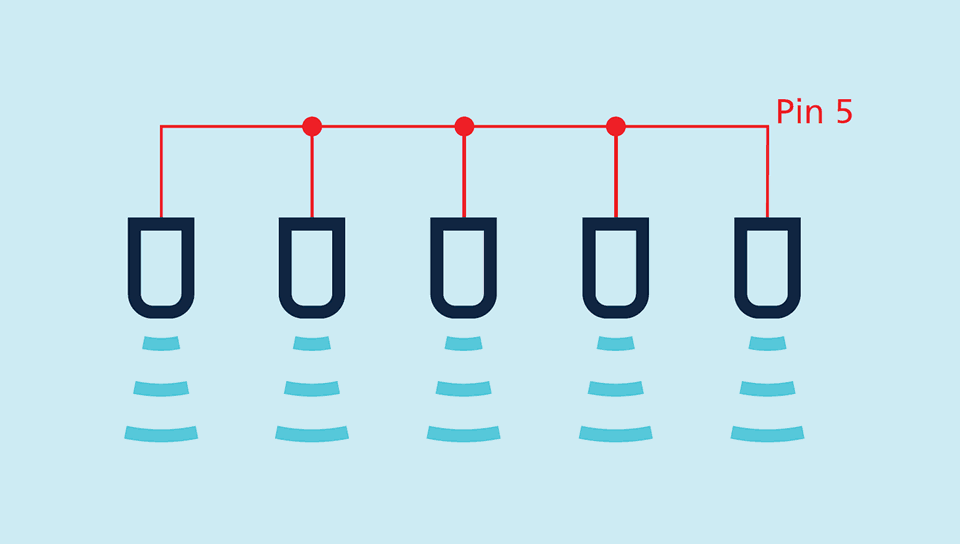The lpc+ ultrasonic sensors
are optionally equipped with two Push-Pull switching outputs or an analogue output plus a Push-Pull switching output. The compact series with M18 threaded sleeves coves four detection ranges from 20 mm to 1.3 m.
Ultrasonic sensors with the Push-Pull output stage support SIO and IO-Link modes. Sensors with analogue output are optionally available with 4–20 mA current output or 0–10 V voltage output.
In SIO mode, sensors are configured using the microsonic Teach-in procedure on pin 5.
For the lpc+ sensor family
there are 2 output stages and 4 detection ranges available:
 |
2 Push-Pull-switching outputs, optionally in pnp or npn circuitry with IO-Link interface |
 |
1 Push-Pull switching output and analogue output 4–20 mA or 0–10 V |
Ultrasonic sensors with switching output have three operating modes:
- Single switching point
- Two-way reflective barrier
- Window mode
Teach-in of a single switching point
- Place object to be detected (1) at the desired distance
- Apply +UB to pin 5 for about 3 seconds
- Then apply +UB to pin 5 again for about 1 second
